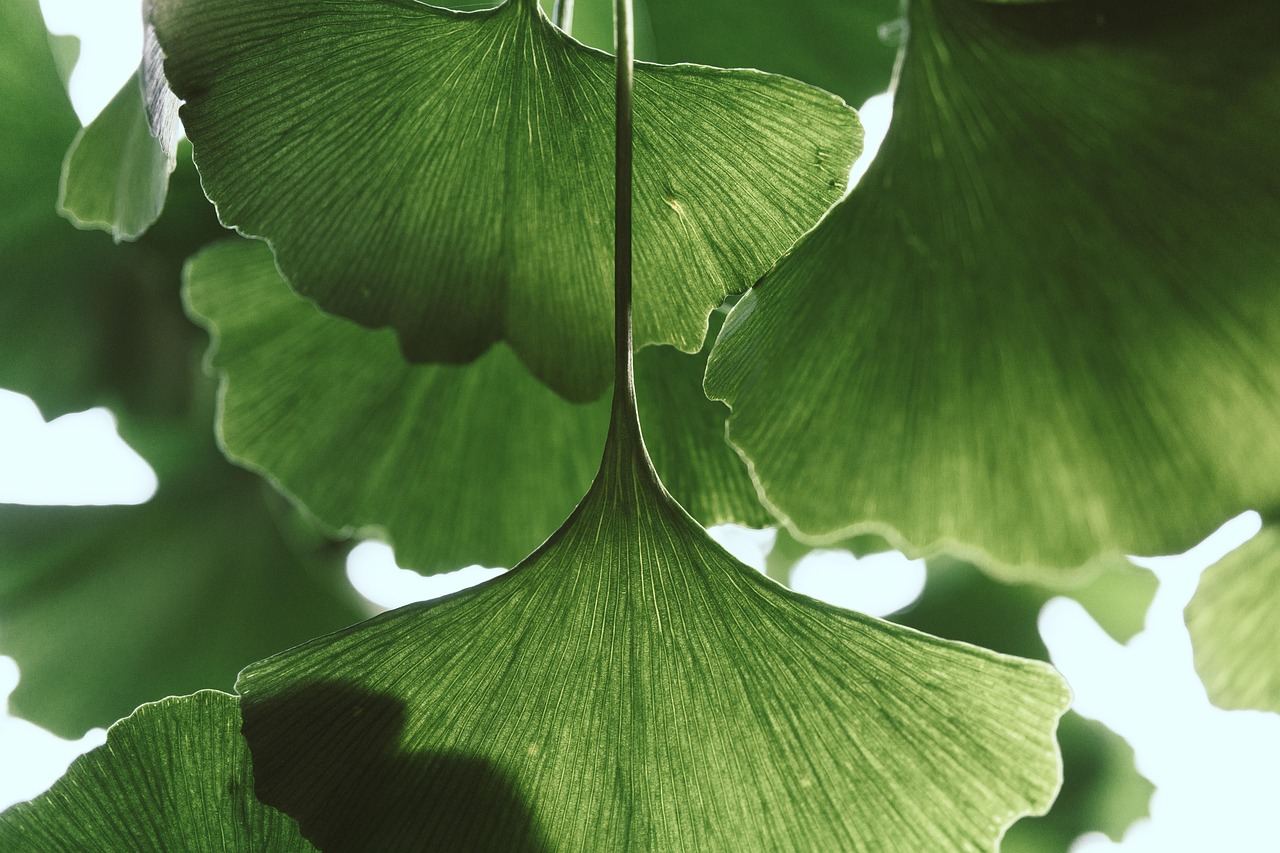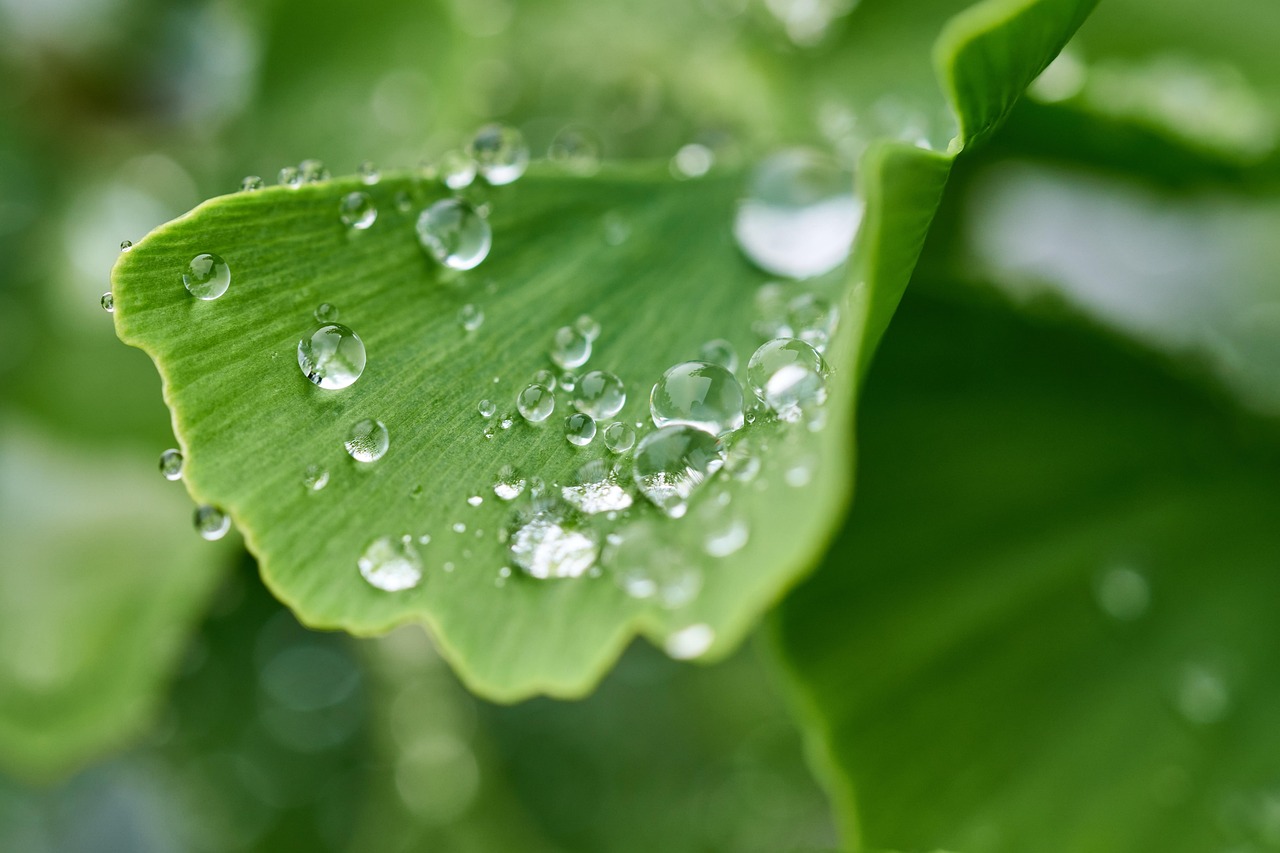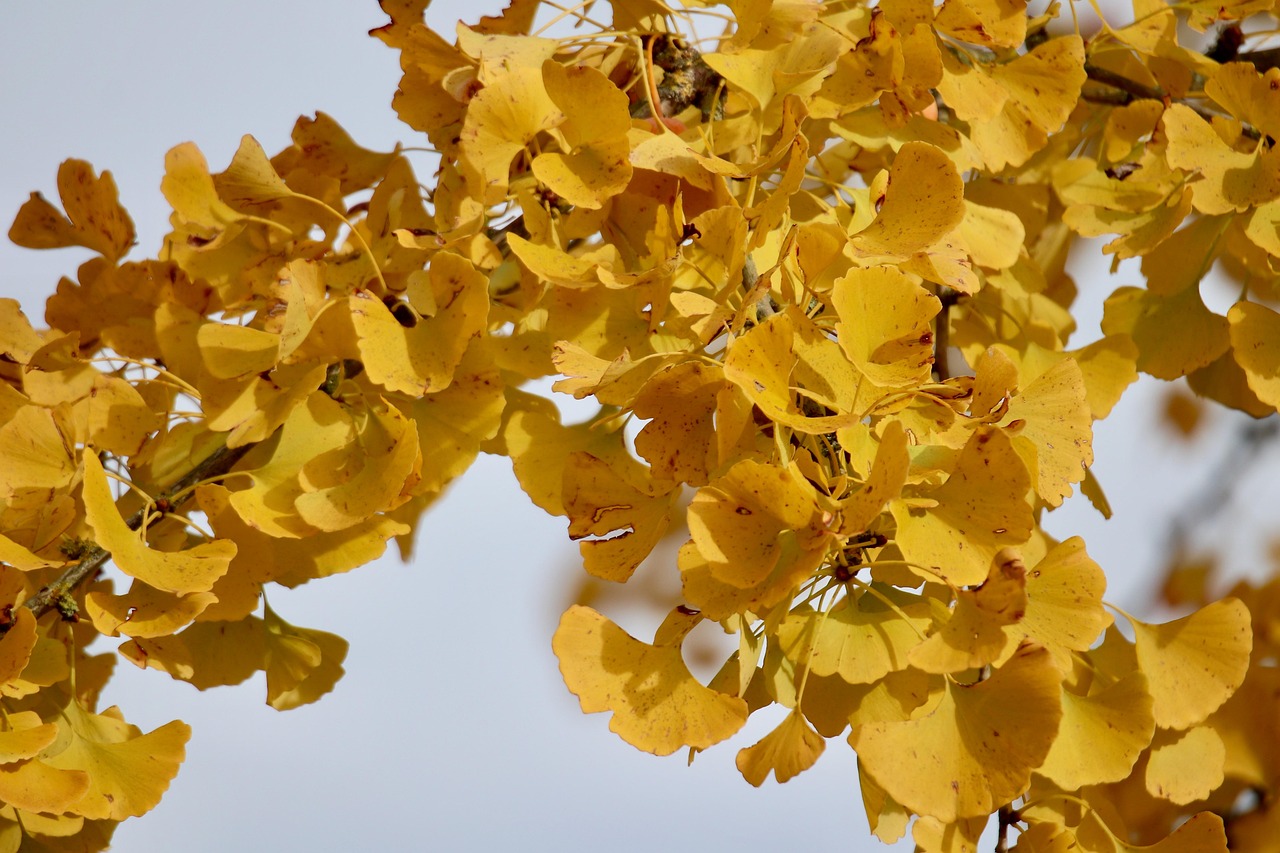To maintain the long-lasting beauty of a ginkgo tree, prune it during late winter or early spring. Focus on removing dead or damaged branches. Ensure you shape the tree to promote an open canopy, which allows sunlight to penetrate and encourages healthy growth.
The ginkgo tree, known scientifically as Ginkgo biloba, is one of the oldest living tree species. With its fan-shaped leaves and unique appearance, it has captivated gardeners and landscapers for centuries. Ginkgo trees are resilient and can thrive in various conditions. However, proper pruning is essential to ensure they remain healthy and visually appealing.

Pruning not only enhances the aesthetics of the ginkgo tree but also supports its overall health. By trimming away unhealthy branches, you can prevent disease spread and improve air circulation within the canopy. This practice is especially important for young trees as it helps establish a strong framework for future growth.
Understanding Ginkgo Tree Growth
Before diving into pruning techniques, it is crucial to understand how ginkgo trees grow. They typically have a pyramidal shape when young, which gradually becomes more rounded as they mature. Their growth habits can vary based on environmental factors, such as soil quality and sunlight exposure.
The following table highlights some key characteristics of ginkgo trees:

| Characteristic | Description |
|---|---|
| Height | Can grow up to 50-80 feet tall |
| Spread | Typically 30-40 feet wide |
| Leaf Shape | Fan-shaped, with unique lobes |
| Growth Rate | Slow to moderate growth rate |
Understanding these characteristics helps you make informed decisions about when and how to prune your ginkgo tree. Generally, ginkgo trees require minimal pruning. However, selective trimming can enhance their natural beauty and longevity.
When to Prune Ginkgo Trees
The ideal time to prune ginkgo trees is during their dormant season, which is typically in late winter or early spring before new growth begins. Pruning at this time minimizes stress on the tree and reduces the risk of sap bleeding. It also allows you to clearly see the tree’s structure without the distraction of foliage.
Avoid pruning during the fall or summer months. Pruning in these seasons can lead to stress and may invite pests or diseases. Moreover, pruning during active growth can result in excessive sap loss, which could weaken the tree.

Essential Pruning Techniques
When approaching ginkgo tree pruning, there are several techniques to keep in mind. Each method serves a different purpose and contributes to the overall health of the tree.
- Crown Thinning: This technique involves selectively removing branches to increase light penetration and air circulation within the canopy. It promotes healthier growth and reduces the risk of disease.
- Crown Raising: If lower branches obstruct pathways or views, raising the crown by removing lower limbs can help. Ensure not to remove too many branches, as this could affect the tree’s stability.
- Crown Reduction: For overgrown ginkgo trees, crown reduction is necessary. This method shortens the height and spread of the tree while maintaining its natural form.
Each pruning method requires specific tools and techniques for effective results. Always ensure that your tools are clean and sharp. This practice helps prevent infection and encourages smooth cuts, allowing for quicker healing for the tree.
Tools Needed for Pruning
Using the right tools is crucial for effective pruning. Here are some essential tools you will need:

- Hand Pruners: Ideal for small branches up to ¾ inch in diameter.
- Loppers: Suitable for branches between ¾ inch and 1½ inches thick.
- Saw: A pruning saw may be necessary for larger branches.
- Gloves: Protect your hands while working.
By using the appropriate tools, you ensure clean cuts that reduce stress on the tree and promote faster healing.
In summary, proper pruning of ginkgo trees enhances their beauty and health. Understanding their growth habits, knowing when to prune, and using effective techniques will lead to a thriving tree that stands out in any landscape.
Pruning Techniques for Ginkgo Trees
When it comes to pruning ginkgo trees, employing the correct techniques is essential for promoting healthy growth and maintaining the tree’s aesthetic appeal. Learning various pruning methods will help you make informed decisions based on the specific needs of your tree.
1. Thinning Cuts
Thinning cuts involve removing entire branches at their point of origin. This technique is beneficial for improving air circulation and light penetration within the canopy. When executed properly, thinning can enhance the overall health of the tree and reduce the risk of diseases.
- Choose branches that are crossing or crowding other limbs.
- Aim for a balanced canopy by removing branches evenly around the tree.
- Always cut back to a lateral branch or bud to encourage new growth.
2. Heading Cuts
Heading cuts are made by cutting back a branch to a certain length, which encourages bushier growth. This technique can help control the size of the tree but should be done sparingly to avoid excessive stress.
- Identify branches that are excessively long or out of shape.
- Make cuts just above a bud facing outward to promote outward growth.
- Avoid cutting too far back, as this can lead to weak regrowth.
3. Cleaning Cuts
Cleaning cuts focus on removing dead, damaged, or diseased branches from the tree. This technique is crucial for maintaining overall tree health and preventing disease spread.
- Inspect the tree thoroughly for any signs of damage or disease.
- Remove branches that show discoloration, decay, or breakage.
- Make sure to disinfect your tools before and after using them on affected areas.
Common Mistakes to Avoid While Pruning
To achieve optimal results, it is essential to be aware of common mistakes that many gardeners make when pruning ginkgo trees. Avoiding these pitfalls can lead to healthier trees and more effective pruning practices.
- Over-pruning: Removing too many branches at once can cause stress and affect growth. Always aim for moderation.
- Improper Timing: Pruning during the active growth season can cause sap loss and weaken the tree. Stick to the recommended late winter or early spring timeframe.
- Ignoring Tree Structure: Failing to maintain the natural shape of the tree can lead to an unbalanced appearance. Always consider the tree’s natural form when making cuts.
- Poor Tool Maintenance: Using dull or dirty tools can cause injury to the tree and introduce diseases. Ensure your tools are sharp and sanitized.
Aftercare Following Pruning
After pruning, providing proper care is crucial for recovery and continued health. Taking the right steps will support your ginkgo tree’s healing process and encourage robust growth.
Watering
Immediately after pruning, it’s important to ensure your ginkgo tree receives adequate water. However, avoid overwatering, as this can lead to root rot.
- Water deeply but infrequently to encourage deep root growth.
- Check soil moisture regularly, especially during dry spells.
Fertilizing
Consider applying a balanced fertilizer after pruning to provide essential nutrients that support healing and new growth. A slow-release fertilizer can be beneficial.
- Select a fertilizer with equal parts nitrogen, phosphorus, and potassium.
- Follow the manufacturer’s instructions for application rates.
Pest and Disease Monitoring
After pruning, keep an eye out for signs of pests or diseases. Ginkgo trees can be susceptible to certain issues, especially following stress from pruning.
- Inspect leaves and branches regularly for unusual spots or insects.
- If you notice any problems, address them promptly with appropriate treatments.
Seasonal Considerations for Ginkgo Tree Care
The care of ginkgo trees varies with the seasons. Understanding seasonal changes will help you provide the best care throughout the year.
Spring
Spring is a time of growth and renewal. After pruning, monitor your tree closely as it begins to leaf out. This is also when you should apply fertilizer if you haven’t already done so.
Summer
During summer, focus on watering and ensuring your ginkgo tree has adequate moisture. If you notice any pests, take action quickly to prevent infestations.
Fall
In fall, prepare your ginkgo tree for the winter months. This includes checking for any late-season pests and making sure the tree is well-hydrated before temperatures drop.
Winter
Winter is a dormant period for ginkgo trees. Ensure that any heavy snow or ice is cleared from branches to prevent breakage. Monitor for any signs of damage during this time as well.
The knowledge of proper pruning techniques, seasonal care, and aftercare strategies ensures that your ginkgo tree remains healthy and beautiful for years to come. By implementing these practices, you will contribute significantly to its longevity and aesthetic appeal in your landscape.
Advanced Pruning Strategies for Ginkgo Trees
Once you have mastered the basic pruning techniques, you can explore more advanced strategies to enhance the health and beauty of your ginkgo tree. These methods can help you achieve a specific aesthetic or address particular growth challenges.
Rejuvenation Pruning
Rejuvenation pruning is a more aggressive approach used primarily on older or overgrown ginkgo trees. This technique involves significantly cutting back the tree to promote new growth and improve vigor.
- Begin by removing any dead or diseased branches.
- Next, trim back overgrown branches to about one-third of their original length.
- Focus on maintaining the tree’s shape while encouraging new shoots to develop.
Rejuvenation pruning may lead to a more dramatic change in appearance, but it can also stimulate healthy growth if done correctly. This method is best applied during the dormant season.
Structural Pruning
Structural pruning aims to establish a strong framework for your ginkgo tree. This practice is particularly important for young trees, as it sets the foundation for future growth.
- Identify the central leader, which is the main upward-growing branch.
- Select 3-5 evenly spaced lateral branches that will serve as scaffolding. These should be strong and well-placed.
- Remove competing leaders and any branches that cross or crowd the selected scaffolding branches.
This technique will create a strong structure that supports healthy growth and reduces the risk of branch failure as the tree matures.
Pest and Disease Management in Ginkgo Trees
Maintaining the health of your ginkgo tree also involves understanding potential pest and disease threats. Being proactive can prevent significant issues from developing.
Common Pests
Ginkgo trees can be susceptible to certain pests, including:
- Aphids: These small insects can cause leaf curling and stunted growth. They can be controlled with insecticidal soap or neem oil.
- Scale Insects: Scale can appear as small bumps on branches. They can be treated with horticultural oil.
- Leaf Galls: Caused by small insects, these deformities can usually be ignored as they rarely harm the tree significantly.
Disease Prevention
While ginkgo trees are generally hardy, they can still be affected by diseases such as:
- Leaf Blight: This fungal infection causes browning leaves. Ensuring proper air circulation and avoiding overhead watering can help prevent it.
- Cankers: These areas of dead tissue can form on branches due to various pathogens. Remove affected branches immediately to prevent spread.
Regular monitoring and proper hygiene practices can significantly reduce the risk of these problems. Always clean tools after use, especially when dealing with infected plants.
Enhancing Aesthetic Appeal Through Pruning
The ginkgo tree is celebrated for its unique beauty, particularly in fall when its leaves turn vibrant yellow. Thoughtful pruning can enhance this aesthetic even further.
Creating a Focal Point
If you want your ginkgo tree to serve as a focal point in your landscape, consider its shape and placement. Here are some tips:
- Prune to maintain a symmetrical shape that draws the eye.
- Remove lower branches to create an elegant canopy that allows for views beneath.
- Consider integrating lighting to highlight its unique form at night.
Seasonal Displays
The beauty of ginkgo trees changes with the seasons. By understanding these transitions, you can make pruning decisions that enhance their visual appeal year-round.
- Spring: Promote full foliage for lush green displays by allowing healthy growth during this season.
- Summer: Maintain an open canopy to ensure sunlight reaches all parts of the tree, enhancing its fullness.
- Fall: Shape the tree to allow for maximum exposure to sunlight, intensifying the autumn colors.
- Winter: Maintain a clean aesthetic by removing any errant branches that disrupt the silhouette against winter skies.
The Role of Mulching in Pruning and Tree Health
Mulching is a beneficial practice that complements pruning and supports overall tree health. It helps retain soil moisture, suppress weeds, and regulate soil temperature.
Selecting Mulch
Choosing the right type of mulch is essential for maximum benefit. Consider these options:
- Bark Mulch: Provides good insulation and moisture retention while breaking down slowly over time.
- Wood Chips: A cost-effective option that also adds organic matter to the soil as it decomposes.
- Pine Needles: Great for acid-loving plants and helps retain moisture effectively.
Applying Mulch
The proper application of mulch can enhance your ginkgo tree’s environment. Follow these guidelines:
- Apply a 2-4 inch layer of mulch around the base of the tree, keeping it away from the trunk to prevent rot.
- Add mulch after pruning to retain moisture during the recovery period.
- Refresh mulch annually to maintain its effectiveness and appearance.
Incorporating these advanced pruning strategies, pest management techniques, aesthetic enhancements, and mulching practices will contribute to a thriving ginkgo tree that brings beauty to your landscape throughout the year. A well-pruned and cared-for ginkgo enhances not only your garden but also your overall outdoor experience. With patience and practice, you will cultivate a stunning specimen that stands the test of time.
Additional Considerations for Ginkgo Tree Care
Beyond pruning, mulching, and pest management, there are several other considerations that can significantly enhance the health and beauty of your ginkgo tree. Addressing these factors can lead to long-term success in your gardening efforts.
Soil Quality
The quality of the soil in which your ginkgo tree is planted directly impacts its health and growth. Ginkgo trees thrive in well-draining soil that is rich in organic matter. Here are some tips for improving soil quality:
- Soil Testing: Conduct a soil test to determine pH levels and nutrient content. Ginkgo trees prefer slightly acidic to neutral soil (pH 5.0 to 7.0).
- Amending Soil: If necessary, amend the soil with organic matter such as compost or aged manure to improve fertility and drainage.
- Drainage Solutions: Ensure good drainage to prevent waterlogging, which can harm the roots. Raised beds or mounds may be beneficial in poorly drained areas.
Planting Location
The location of your ginkgo tree plays a crucial role in its growth and overall health. Consider the following when selecting a planting site:
- Sunlight: Ginkgo trees prefer full sun, requiring at least 6 hours of direct sunlight per day. Ensure they are planted in an area that receives ample sunlight.
- Space: Provide enough space around the tree for air circulation and growth. Ginkgo trees can grow quite large, so plan for their mature size.
- Protection from Wind: While ginkgo trees are resilient, young trees may benefit from some wind protection, especially when they are establishing their root systems.
Companion Planting
Companion planting can enhance the growth of your ginkgo tree while supporting overall garden health. Some plants can benefit from being near ginkgo trees:
- Perennials: Consider planting hardy perennials that thrive in similar conditions, such as hostas and ferns, which can complement the ginkgo’s beauty.
- Ground Covers: Using ground covers like creeping thyme or ajuga can help suppress weeds and retain moisture.
- Flowering Plants: Incorporating flowering plants nearby can attract pollinators and other beneficial insects to your garden.
Final Thoughts
Caring for a ginkgo tree involves understanding its unique needs and characteristics. Through proper pruning, mulching, pest management, and attention to soil quality and location, you can create an environment that promotes health and beauty for this ancient species.
Remember that patience is key when nurturing a ginkgo tree. It may take time to see significant growth or improvements, but with consistent care, your efforts will pay off. A well-maintained ginkgo tree can become a stunning centerpiece in your landscape, offering beauty through all seasons—from lush green leaves in spring and summer to breathtaking golden foliage in the fall.
In summary, the journey of cultivating a ginkgo tree is rewarding. By applying the tips and techniques discussed in this article, you can ensure that your tree remains vibrant and healthy for generations to come. Embrace the art of pruning and caring for your ginkgo tree, and enjoy watching it flourish over time.
Your commitment to maintaining this living piece of history will not only enhance your garden but also enrich your connection to nature. A thriving ginkgo tree stands as a testament to thoughtful gardening practices and the beauty of enduring life.
